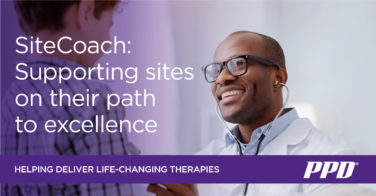Today’s healthcare system is complex and disjointed. Patients have to navigate insurance systems, co-pays, and in-network or out-of-network providers. They bounce between primary care physicians and specialty doctors, brick and mortar pharmacies, and specialty pharmacies—just to get the care they need.
Changes in their health status can also mean changes in their daily life due to medication adherence and changing daily habits, such as dietary changes or physical activity recommendations.
Because patients are faced with daunting amounts of dense medical jargon and tough choices about treatment options, it’s no wonder that patients with acute and chronic conditions are confused. Patients are grappling with questions, including:
- What do they need to know?
- What do they need to do?
- How are they going to make the changes they need to make?
- How can they make sense of the complicated medical information?
- What does their future hold?
Pharma is in a position to address patient confusion. But, an even better goal may be to identify mechanisms and changes that can limit confusion before it starts.
To fully understand the factors that create patient confusion, we need to understand how patients think, make decisions, and cope with changes and challenges to their health. The scientific study of human behavior, or behavioral science, can provide a lens to understand patients and help us to identify what we can do to meet their needs.
What Are the Sources of Patient Confusion?
Let’s unpack the reasons behind patient confusion and determine how the issues can be proactively addressed.
1. Education only goes so far.
Patient education is critical. Patients need information about their condition, and current and future treatment options. However, it is a mistake to assume that education alone is enough to alleviate patient confusion. Often, pharma makes an assumption that the patient is ready and able to process everything that’s going on, or that education can correct any misperceptions in their thinking.
Unfortunately, this may prove to be too much of a leap of faith. Patients may not be ready for information that threatens their self-view or scares them. Too much education or information, in and of itself, can create an information overload that only furthers the confusion.
Education-only tactics will not reduce the patient’s confusion. Instead, pharma should consider behavioral science approaches that increase receptivity to information and enable us to deliver information that supports the patient’s understanding.
Behavioral Science has identified the illness perceptions that define patients’ thoughts and beliefs about their condition. Illness perceptions include a variety of sub-components, including whether patients understand the timeline of their condition, if their condition can be cured, and what they believe are the consequences of their disease. Illness perceptions are deeply held and personal beliefs. Accurate illness perceptions are associated with better engagement with healthcare and greater adherence.
The challenge is that patients often have inaccurate illness perceptions. These inaccurate illness perceptions often persist despite educational information to the contrary. Additionally, people can be quite resistant to attempts directed at changing their mind. Through evidence-based scientific research, behavioral scientists have identified how to move patients from inaccurate to more accurate illness perceptions—approaches that go beyond simple messaging or education.
2. Treatment information is overwhelming.
Patients may not understand their treatment options or their specified treatment plan.
Healthcare professionals may only discuss a treatment option with their patient for a few minutes or less. Then, patients are left to do their own research to learn about their condition or available treatments. Living in the information age means that patients can readily access information, which may or may not be accurate or helpful. Even if the information is correct, it may be too complex for the patient to understand and result in increased confusion.
Personal anecdotes add to the complexity. Anecdotes from other patients or online forums often hold a lot of weight for patients. These powerful stories influence patients’ thoughts and treatment decisions, but these anecdotes may not be representative of the actual data regarding a treatment. Additionally, while treatment guidelines are a source of information that patients may encounter, they are rigorous and usually not designed for a patient audience. They often include dependencies and conditional situations that make it difficult for patients to interpret and understand. The net result is that patients’ attempts to better understand treatment options often leave them more confused than when they started.
3. Acute and chronic conditions increase stress and impair well-being.
Being a patient carries a great deal of stress. For starters, there’s stress associated with physiological changes. Many conditions cause fatigue, sleep disruption, and pain—all of which have an impact on a person’s stress level and quality of life. In addition, patients often experience negative emotions, including anger, anxiety, and fear.
The impact of stress and impaired well-being has a significant effect on cognitive functions, including memory, information processing, and decision making. In short, being a patient can impact the patient’s cognitive abilities to think and reason. These effects can be especially troublesome when you consider that being a patient means that you are often asked to process a lot of information, make decisions between complex treatment regimens, and negotiate a complex healthcare system.
The silver lining is that behavioral scientists have identified how to improve cognitive functioning, limit the impact of stress, and improve emotional well-being. Behavioral science provides interventions designed to improve patient emotional well-being, coping skills, and cognitive processes—such as decision making, problem-solving, and memory. These strategies can be easily pulled into tactics and resources for patients.
4. Simply being a “patient” can be a confusing and overwhelming experience.
Patients can be confused about how they got to where they are. They may ask themselves why they didn’t notice symptoms earlier. They may feel that their life has spiraled out of control after their diagnosis and subsequent treatments. Additionally, patients may be uncertain about the lifestyle changes that they should make to manage their condition or limit exacerbations.
These lifestyle changes may request that patients change habits that they have had for decades. Patients may also be confused about how to work with their doctor, or what their role should be as an advocate for their care. They are concerned with questions such as:
- What information should they share?
- What is the purpose of each appointment?
- How do they know that the treatment plan is right for them?
- What is the impact on their family?
Patients often feel as though they are facing a battle they won’t win—or an uphill climb that feels daunting. They may lack the self-confidence to make the changes they need to make. Behavioral science is uniquely positioned to help patients change habits and change their mindset. The strategies behavioral science applies can help patients leave behind guilt, come to terms with diagnosis, regain feelings of control, and build the self-confidence they need to change their habits and engage in their health.
To truly reduce confusion, we must meet patients where they are and offer solutions that help them break down the necessary steps and shift their mindset about what it is possible for them to achieve. And evidence-based behavioral science is the path to reduced confusion and better patient outcomes.
How You Can Dispel Patient Confusion
The solution to addressing patient confusion is CLEAR.
- Communicate. Effective messaging to patients should focus on how the information is shared as much as focusing on the information itself.
- Learn. Understand what leads to patient confusion and which strategies can reduce the confusion.
- Exceed Expectations. Go beyond the block-and-tackle approaches to build experiences and support that exceeds patient expectations.
- Address. Recognize the psychological impact of the illness and provide resources to patients to manage their emotional well-being, build coping skills, and increase resilience.
- Re-evaluate. Go beyond traditional approaches and product-centered brand strategies. Pharma has an opportunity to create a more integrated model built around the underlying needs of patients. This approach would encourage pharma to identify patient confusion points before they develop.









